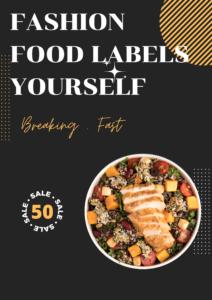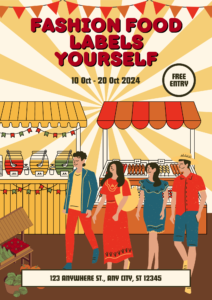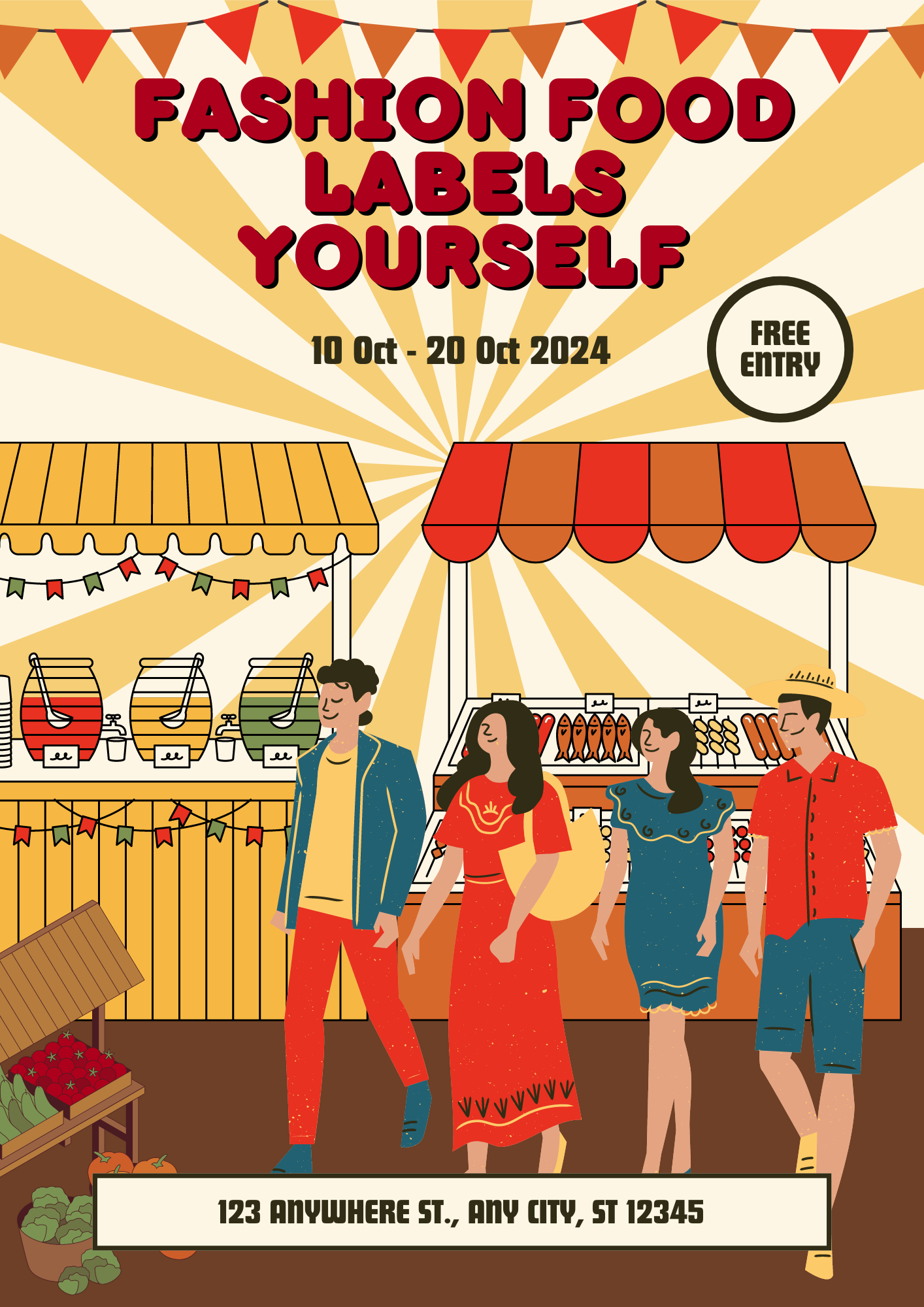Table of Contents
ToggleIntroduction
In the dynamic world of digital marketing, mastering webmaster quality guidelines is crucial for the success of any online endeavor. Today, we delve into a unique realm where fashion meets food: creating your own food labels. As fashion-forward foodpreneurs, understanding and adhering to webmaster quality guidelines ensures not just visibility but also credibility in the online landscape. Let’s explore how to fashion food labels yourself while maintaining the highest standards of webmaster quality.
yourself
Why Fashion Food Labels Yourself?
1. Uniqueness in Design
- SEO Boost: Custom-designed labels can set your products apart, attracting both search engines and customers.
- Branding: Tailored labels reflect your brand’s personality, fostering recognition and loyalty.
2. Cost-Efficiency
- Savings: Creating your labels can be more cost-effective, especially for startups or small businesses.
- Flexibility: Adjust designs easily for new products or seasonal variations without extra costs.
3. Quality Control
- Compliance: Ensure all nutritional information is accurate and compliant with regulations.
- Ingredients: Highlight key ingredients or special features to appeal to health-conscious consumers.

yourself
Webmaster Quality Guidelines: Key Points
1. Mobile-Friendly Design
- Responsive: Labels should be easily readable on mobile devices without zooming.
- Test: Use Google’s Mobile-Friendly Test to ensure compatibility.
2. Unique Content
- Avoid Duplicates: Create original descriptions for each product.
- Variety: Use diverse images and descriptions to keep content fresh.
3. Page Speed
- Optimization: Compress images and minify code for fast loading.
- Google PageSpeed Insights: Check and improve page speed for better user experience.
4. Structured Data
- Schema Markup: Implement schema for food products to enhance search results.
- Accuracy: Ensure all data, like nutritional values, is correctly marked up.
5. Secure Connection (HTTPS)
- Trustworthiness: Google favors secure sites, so ensure your label pages are HTTPS.
- SSL Certificate: Obtain and install a valid SSL certificate for encryption.
FAQ
Q: Can I use online tools for label design?
A: Yes, many online tools offer customizable label templates. Ensure your final design is unique and fits your brand’s image. yourself
Q: How do I include nutritional information?
A: For web compliance, create a dedicated section on your label page for nutritional details. Use clear tables or lists for easy readability.
Q: Should I include allergen information?
A: Absolutely. Clearly list any allergens present in your products. This information is not only crucial for SEO but also for customer safety.
Q: What file format should my labels be in?
A: Opt for web-friendly formats like JPEG or PNG. These formats balance image quality with efficient web loading.
Conclusion
Crafting your own food labels is not just an artistic endeavor; it’s a strategic move to align with webmaster quality guidelines. By following these guidelines, your labels become more than just pretty designs—they become powerful SEO assets. Remember, uniqueness, quality, and compliance are the pillars of successful label creation. So, fashion your food labels with flair, and watch your brand sizzle in the digital space!
Stay tuned for more insights into mastering webmaster quality guidelines for a thriving online presence!
Introduction
In the dynamic world of digital marketing, mastering webmaster quality guidelines is crucial for the success of any online endeavor. Today, we delve into a unique realm where fashion meets food: creating your own food labels. As fashion-forward foodpreneurs, understanding and adhering to webmaster quality guidelines ensures not just visibility but also credibility in the online landscape. Let’s explore how to fashion food labels yourself while maintaining the highest standards of webmaster quality.
Why Fashion Food Labels Yourself?
1. Uniqueness in Design
In a market saturated with products, custom-designed labels can set your offerings apart. Not only do they attract the attention of search engines, but they also catch the eye of potential customers browsing the aisles or online.
SEO Boost:
When you create your labels, you have the opportunity to integrate relevant keywords seamlessly. This can improve your SEO (Search Engine Optimization) ranking, making your products more discoverable in online searches.
Branding:
Custom labels are an extension of your brand identity. They reflect your brand’s personality, values, and story. This consistency fosters recognition and loyalty among consumers.
2. Cost-Efficiency
For startups and small businesses, cost is a significant factor. Designing your labels can be far more economical than outsourcing to a design agency. Here’s how:
Savings:
Outsourcing label design can be expensive, especially for businesses with limited resources. By designing in-house, you save on design fees and retain control over the creative process.
Flexibility:
As your product line expands or seasonal variations arise, having the ability to adjust your labels quickly is invaluable. With in-house design, you can make changes on-the-fly without incurring additional costs.
3. Quality Control
Maintaining control over the creation process ensures that your labels meet the highest standards of quality. This is particularly important for food products, where accuracy and compliance are paramount.
Compliance:
Regulations surrounding food labeling are strict and vary by region. By designing your labels, you can ensure that all nutritional information is accurate and compliant with local laws.
Ingredients Highlight:
Certain ingredients may be key selling points for your products, such as organic, gluten-free, or locally sourced ingredients. Custom labels allow you to highlight these features prominently.
Webmaster Quality Guidelines: Key Points
1. Mobile-Friendly Design
In an age where mobile devices dominate internet usage, ensuring your labels are mobile-friendly is crucial.
Responsive:
Your labels should adapt seamlessly to different screen sizes. This ensures that users on smartphones or tablets have a positive browsing experience.
Google’s Mobile-Friendly Test:
Before finalizing your labels, use Google’s tool to check their mobile compatibility. This ensures that your labels meet Google’s standards for mobile optimization.
2. Unique Content

Search engines prioritize unique and valuable content. When creating your labels, keep these guidelines in mind:
Avoid Duplicates:
Each product should have its unique description. Avoid copying and pasting descriptions from other sources, as this can harm your SEO ranking.
Diverse Images and Descriptions:
Using a variety of images and descriptions not only improves SEO but also provides customers with a comprehensive view of your products.
3. Page Speed
Fast-loading pages contribute to a positive user experience and higher search rankings.
Optimization:
Optimize your label pages for speed by compressing images and minifying code. This reduces load times and improves user satisfaction.
Google PageSpeed Insights:
Regularly check your label pages using Google’s PageSpeed Insights. This tool provides suggestions for improving page speed and performance.
4. Structured Data
Structured data markup helps search engines understand the content of your labels.
Schema Markup:
Implement schema markup for food products. This provides search engines with detailed information, such as nutritional values and allergens, directly in the search results.
Accuracy:
Ensure that all structured data, such as ingredients and nutritional information, is up to date and accurate. Inaccurate data can lead to penalties from search engines.
5. Secure Connection (HTTPS)
Google prioritizes secure websites in search results. Ensure that your label pages are served over a secure connection.
Trustworthiness:
Having an HTTPS website reassures customers that their data is secure. This can lead to higher trust in your brand and improved SEO rankings.
SSL Certificate:
Obtain and install a valid SSL certificate for your website. This certificate encrypts data transmitted between your website and users, adding an extra layer of security.
FAQ
Q: Can I use online tools for label design?
A: Yes, many online tools offer customizable label templates. However, ensure that your final design is unique and aligns with your brand’s image. Customization is key to standing out in a crowded market.
Q: How do I include nutritional information?
A: Create a dedicated section on your label pages for nutritional details. Use clear tables or lists to present information such as calories, fat content, and allergens. This not only helps with SEO but also provides valuable information to consumers.
Q: Should I include allergen information?
A: Absolutely. List all allergens present in your products prominently on the label. This is not only a legal requirement in many jurisdictions but also crucial for customer safety and trust.
Q: What file format should my labels be in?
A: Opt for web-friendly formats such as JPEG or PNG. These formats balance image quality with efficient web loading. Remember to compress images without compromising quality for faster loading times.
Q: How often should I update my labels?
A: Regularly updating your labels is important for accuracy and compliance. Update labels whenever there are changes to ingredients, nutritional information, or branding. Stale or outdated content can harm your SEO efforts.
Conclusion
Crafting your own food labels is not just an artistic endeavor; it’s a strategic move to align with webmaster quality guidelines. By following these guidelines, your labels become more than just pretty designs—they become powerful SEO assets. Remember, uniqueness, quality, and compliance are the pillars of successful label creation. So, fashion your food labels with flair, and watch your brand sizzle in the digital space!
Stay tuned for more insights into mastering webmaster quality guidelines for a thriving online presence!
References
- Google’s Mobile-Friendly Test: [link]
- Google PageSpeed Insights: [link]
- Schema Markup Guide: [link]
- SSL Certificate Information: [link]
This comprehensive guide on creating food labels while adhering to webmaster quality guidelines provides valuable insights for foodpreneurs seeking to establish a strong online presence. From the importance of unique design to the technical aspects of SEO optimization, this guide equips you with the knowledge to stand out in the competitive world of online food retail. Whether you’re a startup or an established brand, mastering these guidelines will elevate your products and brand visibility. Fashion your food labels with care, and let your creativity and compliance drive success!

